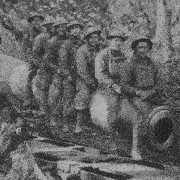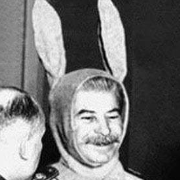|
I swear to God if he talks poo poo about James Wolfe, like they mocked Isaac Brock, I'm going to pop off. 
|
|
|
|

|
| # ? May 26, 2024 03:05 |
|
mawarannahr posted:1990 was like 33 years ago. can you imagine podcasting in 33 years? "Live! From beneath six feet of water!"
|
|
|
|
Frosted Flake posted:I was just thinking the same thing. I had no idea chestnuts were extinct. My understanding is there's a tiny patch left in Wisconsin
|
|
|
|
ClassActionFursuit posted:My understanding is there's a tiny patch left in Wisconsin As well as BC and northern Michigan. The blight is an airborne fungus that could spread 50km a year or something (?). The isolated patches of trees, hundreds of km from the original range, are, I suppose, safe for now. I'm not sure how that helps exactly, other than people don't just import Portuguese cork and Japanese chestnut willy nilly anymore, so presumably they're safe as long as that separation is maintained.
|
|
|
|
Frosted Flake posted:I was just thinking the same thing. I had no idea chestnuts were extinct. There are patches still around and scientists are working on it. It really is remarkable how much a forest changes when you remove deer from the equation.
|
|
|
|
Zeroisanumber posted:There are patches still around and scientists are working on it. It really is remarkable how much a forest changes when you remove deer from the equation. I must have posted about this in the Canadian politics thread, but in southern Ontario deer were all but extinct in 1900, as were turkeys and bears. The thing is, that at the time, forests were in even worse shape. See, they used to slash and burn so extensively that they say you could read a newspaper at night by the light of the fires all along the horizon. There are large belts of sandy soil in southern Ontario, and after the soil was exhausted there were huge expanses of wasteland with blowing sand. The soil erosion was breathtaking. It's really hard to comprehend by there are only traces, less than 1%, of old growth forest in the south. Game birds were extirpated, even ones that are nuisances now like pheasants and grouse. Rabbits were a rare sight. This all went on until the 1920's. When conservation started, it was sort of a sportsmen's movement, or appealed to romantic ideas of wilderness, so deer were almost their top priority. You know, majestic stags and all that. Livestock were even more important to the economy back then so reintroducing coyotes, wolves, cougars and bears was practically out of the question. The combination of these meant that white tail went from, as far as I know barely a few hundred in all of Southern Ontario to a huge nuisance. It's really disheartening, because of course they really did think they were making things better, it's just that it wasn't a scientific understanding or anything but based on the idea of wilderness in the British Empire. Sort of like how they prioritized conserving tigers and elephants elsewhere. It wasn't based on ecosystems but sporting and sentiment.
|
|
|
|
Frosted Flake posted:I must have posted about this in the Canadian politics thread, but in southern Ontario deer were all but extinct in 1900, as were turkeys and bears. quoting for interest value, thanks FF
|
|
|
|
Here in MN we've started some deer culls and the DNR is expanding doe permits in some areas. We also have wolves, cougar, lynx, bobcats, and bears, which help. Big state project that they're working on right now is fighting ash borers and introducing elm trees that are immune to Dutch Elm. We had a nice, long, cold, snowy winter so that helped knock back the pests. Helps that we have the U of M agriculture school, which is one of the best in the region.
|
|
|
|
The Matheson Fire is a pretty good example. Or, further south, Simcoe County In the early 1800's, much of Simcoe County was covered with valuable forests of both softwood and hardwood species. The first timber barons saw the forest as a nearly inexhaustible supply of timber, while the early settlers saw the forests as an impediment to farming and vast areas were cleared and burned. For a hundred years the forests of Simcoe County fell to the lumberjack's axe with no thought of conservation for tomorrow. The slash from logging was left to burn and re-burn, destroying the soil until nothing was left but barren plain. "I can remember the night skies red with such fires - at Midhurst and Anten Mills and Orr Lake," said E. C. Drury, a long-time resident and community leader of Simcoe County. By the early 1900's there was little timber left to cut in Simcoe County and the once richly forested areas had become virtual wastelands. When he became Premier of Ontario in 1919, Drury was instrumental in establishing the "Agreement Forest" program. Local governments purchased lands and turned them over to the Ontario Department of Lands and Forests for protection and forestry development. Appropriately, Simcoe County was the first to take advantage of this program. On May 8, 1922 the first trees were planted at the "Hendrie" tract in Vespra township. From 1922 to 1927 a total of 1,344,600 trees were planted at Hendrie and today it remains a lasting testimonial to the foresight of those early pioneers in forestry. In the next 20 years the Simcoe County Forest (SCF) were expanded with the purchase of similar "barren lands". The Tracts of Orr Lake, Waverley, Tosorontio, Drury, Barr and Wildman were reforested with the planting of another 10,000,000 trees. Most of these lands had been so devastated by fire, drought and wind that they were virtually deserts. As the new forest grew they stabilized the blowing sand and started the process of rehabilitation. By 1948, a short 26 years after the first tree planting, most of the barren lands had been reforested with healthy pine and spruce plantations. The first thinning of these forest plantations were done at Hendrie and Orr Lake to relieve overcrowding, and as a result the Simcoe County Forest even began to generate some revenue. The problem was that these were all planted rows of pines, you can see that most easily when driving through towards Wasega Beach. The county forests are beautiful, but they aren’t natural. This means they aren’t very diverse habitats, there aren’t any hardwoods, and those motherfucking deer prevent anything new, even undergrowth, from growing. Frosted Flake has issued a correction as of 15:19 on Apr 27, 2023 |
|
|
|
speaking more on my experiences with MN forestry, i don't really see ontario's conservationists back in the 20s focusing on white tailed deer to be especially problematic. you need a healthy forest ecosystem to support a solid deer population, and while that ecosystem won't be the same as the one that was there pre-contact, there really isn't any going back anyway. by the 20s much of north america was permanently changed. i took some field bio classes in undergrad, and for one of those i went out to a very remote and isolated patch of old growth forest. this one specific spot had a completely different soil profile, which basically molded the entire ecosystem around it- one that was distinct from the surrounding forest. that entire ecosystem difference came down, apparently, to the fact that invasive european worms hadn't made it there. the soil was inhabited by a fully native invertebrate population, which supported an entirely distinct soil microbiome (or maybe the other way around, i dunno). those european worms are everywhere, and we're never getting rid of them. they alter the forest from the ground up as they outcompete native species and cultivate a different set of soil microbes. the soil in that native area literally felt different to walk on- it was springy and more aerated. forests across NA used to be like that but are completely changed now forever. personally i'd rather have deer than not-deer, because they're the dominant land mammal of the region, and something will fill that niche. may as well be deer given they were here before us i didn't listen to the wtyp that sparked the discussion so i hope i'm not being redundant
|
|
|
|
|
I had no idea that earthworms weren't native to North America.
|
|
|
|
here's a canadian news article on that. same things apply down here unfortunately. https://www.cbc.ca/news/science/invasive-earthworms-threat-forests-climate-change-1.6154164
|
|
|
|
|
Huh I just listened to TrueAnon's first spot with David Banks yesterday and finished reading Tom Frank's Listen, Liberal the day before, which talks a lot about the "creative class" and Richard Florida, and now the latest ep is Banks back to talk about exactly that subject. Clearly they are watching me.
|
|
|
|
KomradeX posted:Kind of wish I hadn't listened to this episode on forests on WTYP 
|
|
|
|
Zeroisanumber posted:I had no idea that earthworms weren't native to North America. There are native earthworms, it is just the invasive earthworms that are causing issues. quote:Of the 182 taxa of earthworms found in the United States and Canada, 60 (33%) are introduced species.
|
|
|
|
A friend's degrees are in a related field, though he studies the ideological, political and military dimensions of wilderness. I have a stack of books here that might be of interest. They're out of order, but I think they're grouped by 19th century literature and art, the British Empire, the American Civil War, and I think the rest are misc. : The Empire of Progress: West Africans, Indians, and Britons at the British Empire Exhibition, 1924–25 This much-needed study of the British Empire Exhibition reveals durable, persistent connections between empire and domestic society in Britain during the interwar years. It demonstrates that the Exhibition was a marker of how by 1924, imperial relations were increasingly likely to be shaped by forces located on the colonial periphery. The Art of the Anthropological Diorama Dioramas are devices on the frontier of different disciplines: art, anthropology, and the natural sciences, to name a few. Their use developed during the nineteenth century, following reforms aimed at reinforcing the educational dimension of museums. While dioramas with human figures are now the subject of healthy criticism and are gradually being dismantled, a thorough study of the work of artists and scientists who made them helps shed light on their genesis. Among other displays, this book examines anthropological dioramas of two North American museums in the early twentieth century: the American Museum of Natural History in New York, and the New York State Museum. Sites of creation and mediation of knowledge, combining painting, sculpture, photography, and material culture, dioramas tell a story that is always political. The Howling Storm: Weather, Climate, and the American Civil War Traditional histories of the Civil War describe the conflict as a war between North and South. Kenneth W. Noe suggests it should instead be understood as a war between the North, the South, and the weather. In The Howling Storm, Noe retells the history of the conflagration with a focus on the ways in which weather and climate shaped the outcomes of battles and campaigns. He further contends that events such as floods and droughts affecting the Confederate home front constricted soldiers? food supply, lowered morale, and undercut the government?s efforts to boost nationalist sentiment. By contrast, the superior equipment and open supply lines enjoyed by Union soldiers enabled them to cope successfully with the South?s extreme conditions and, ultimately, secure victory in 1865. Climate conditions during the war proved unusual, as irregular phenomena such as El Niño, La Niña, and similar oscillations in the Atlantic Ocean disrupted weather patterns across southern states. Taking into account these meteorological events, Noe rethinks conventional explanations of battlefield victories and losses, compelling historians to reconsider long-held conclusions about the war. Unlike past studies that fault inflation, taxation, and logistical problems for the Confederate defeat, his work considers how soldiers and civilians dealt with floods and droughts that beset areas of the South in 1862, 1863, and 1864. In doing so, he addresses the foundational causes that forced Richmond to make difficult and sometimes disastrous decisions when prioritizing the feeding of the home front or the front lines. The Howling Storm stands as the first comprehensive examination of weather and climate during the Civil War. Its approach, coverage, and conclusions are certain to reshape the field of Civil War studies. Wild Spaces, Open Seasons: Hunting and Fishing in American Art Wild Spaces, Open Seasons traces the theme of hunting and fishing in American art from the early nineteenth century through World War II. Describing a remarkable group of American paintings and sculpture, the contributors reveal the pervasiveness of the subjects and the fascinating contexts from which they emerged. In one important example after another, the authors demonstrate that representations of hunting and fishing did more than illustrate subsistence activities or diverting pastimes. The portrayal of American hunters and fishers also spoke to American ambitions and priorities. In his introduction, noted outdoorsman and author Stephen J. Bodio surveys the book's major artists, who range from society painters to naturalists and modernists. Margaret C. Adler then explores how hunting and fishing imagery in American art reflects traditional myths, some rooted in classicism, others in the American appetite for tall tales. Kory W. Rogers, in his discussion of works that valorize the dangers hunters faced pursuing their prey, shows how American artists constructed new rituals at a time when the United States was rapidly transforming from a frontier society into a modern urban nation. Shirley Reece-Hughes looks at depictions of families, pairs, and parties of hunters and fishers and how social bonding reinvigorated American society at a time of social, political, and cultural change. Finally, Adam M. Thomas considers themes of exploration and hunting as integral to conveying the individualism that was a staple of westward expansion. In their depictions of the hunt or the catch, American artists connected a dynamic and developing nation to its past and its future. Through the examination of major works of art, Wild Spaces, Open Seasons brings to light an often-overlooked theme in American painting and sculpture. Ruin Nation: Destruction and the American Civil War During the Civil War, cities, houses, forests, and soldiers’ bodies were transformed into “dead heaps of ruins,” novel sights in the southern landscape. How did this happen, and why? And what did Americans—northern and southern, black and white, male and female—make of this proliferation of ruins? Ruin Nation is the first book to bring together environmental and cultural histories to consider the evocative power of ruination as an imagined state, an act of destruction, and a process of change. Megan Kate Nelson examines the narratives and images that Americans produced as they confronted the war’s destructiveness. Architectural ruins—cities and houses—dominated the stories that soldiers and civilians told about the “savage” behavior of men and the invasions of domestic privacy. The ruins of living things—trees and bodies—also provoked discussion and debate. People who witnessed forests and men being blown apart were plagued by anxieties about the impact of wartime technologies on nature and on individual identities. The obliteration of cities, houses, trees, and men was a shared experience. Nelson shows that this is one of the ironies of the war’s ruination—in a time of the most extreme national divisiveness people found common ground as they considered the war’s costs. And yet, very few of these ruins still exist, suggesting that the destructive practices that dominated the experiences of Americans during the Civil War have been erased from our national consciousness. The Popular Frontier: Buffalo Bill's Wild West and Transnational Mass Culture When William F. Cody introduced his Wild West exhibition to European audiences in 1887, the show soared to new heights of popularity and success. With its colorful portrayal of cowboys, Indians, and the taming of the North American frontier, Buffalo Bill's Wild West popularized a myth of American national identity and shaped European perceptions of the United States. The Popular Frontier is the first collection of essays to explore the transnational impact and mass-cultural appeal of Cody's Wild West. As editor Frank Christianson explains in his introduction, for the first four years after Cody conceived it, the Wild West exhibition toured the United States, honing the operation into a financially solvent enterprise. When the troupe ventured to England for its first overseas booking, its success exceeded all expectations. Between 1887 and 1906 the Wild West performed in fourteen countries, traveled more than 200,000 miles, and attracted a collective audience in the tens of millions. How did Europeans respond to Cody's vision of the American frontier? And how did European countries appropriate what they saw on display? Addressing these questions and others, the contributors to this volume consider how the Wild West functioned within social and cultural contexts far grander in scope than even the vast American West. Among the topics addressed are the pairing of William F. Cody and Theodore Roosevelt as embodiments of frontier masculinity, and the significance of the show's most enduring persona, Annie Oakley. An informative and thought-provoking examination of the Wild West's foreign tours, The Popular Frontier offers new insight into late-nineteenth-century gender politics and ethnicity, the development of American nationalism, and the simultaneous rise of a global mass culture. Hunting Africa: British Sport, African Knowledge and the Nature of Empire This book recovers the multiplicity of meanings embedded in colonial hunting and the power it symbolized by examining both the incorporation and representation of British women hunters in the sport and how African people leveraged British hunters' dependence on their labor and knowledge to direct the impact and experience of hunting. Museums and Empire: Natural History, Human Cultures and Colonial Identities Museums and Empire is the first book to examine the origins and development of museums in six major regions of the British Empire in the nineteenth and twentieth centuries. It analyzes museum histories in thirteen major centers in Canada, South Africa, Australia, New Zealand, India, and South-East Asia, setting them into the economic and social contexts of the cities and colonies in which they were located. Written in a lively and informative style, it also touches upon the history of many other museums in Britain and other territories of the Empire. A number of key themes emerge from its pages; the development of elites within colonial towns and cities; the emergence of the full range of cultural institutions associated with this; and the reception and modification of the key scientific ideas of the age.It will be essential reading for students and academics concerned with museum studies and imperial history and to a wider public devoted to the cause of museums and heritage The Nature of Empires and the Empires of Nature: Indigenous Peoples and the Great Lakes Environment Drawing on themes from John MacKenzie’s Empires of Nature and the Nature of Empires (1997), this book explores, from Indigenous or Indigenous-influenced perspectives, the power of nature and the attempts by empires (United States, Canada, and Britain) to control it. It also examines contemporary threats to First Nations communities from ongoing political, environmental, and social issues, and the efforts to confront and eliminate these threats to peoples and the environment. It becomes apparent that empire, despite its manifestations of power, cannot control or discipline humans and nature. Essays suggest new ways of looking at the Great Lakes watershed and the peoples and empires contained within it. (book mentioned above) The Empire of Nature: Hunting, Conservation and British Imperialism This study assesses the significance of the hunting cult as a major element of the imperial experience in Africa and Asia. Through a study of the game laws and the beginnings of conservation in the nineteenth and early twentieth centuries, the author demonstrates the racial inequalities which existed between Europeans and indigenous hunters. Africans were denied access to game, and the development of game reserves and national parks accelerated this process. Indigenous hunters in Africa and India were turned into poachers and only Europeans were permitted to hunt. In India, the hunting of animals became the chief recreation of military officers and civilian officials, a source of display and a symbolic dominance of the environment. Imperial hunting fed the natural history craze of the day and many hunters collected trophies and specimens for private and public collections as well as contributing to hunting literature. John MacKenzie also connects hunting and game conservation to concepts of masculinity, attitudes towards diet, and the development of western tourism. Nature and Empire in Ottoman Egypt: An Environmental History In one of the first ever environmental histories of the Ottoman Empire, Alan Mikhail examines relations between the empire and its most lucrative province of Egypt. Based on both the local records of various towns and villages in rural Egypt and the imperial orders of the Ottoman state, this book charts how changes in the control of natural resources fundamentally altered the nature of Ottoman imperial sovereignty in Egypt and throughout the empire. In revealing how Egyptian peasants were able to use their knowledge and experience of local environments to force the hand of the imperial state, Nature and Empire in Ottoman Egypt tells a story of the connections of empire stretching from canals in the Egyptian countryside to the palace in Istanbul, from the Anatolian forest to the shores of the Red Sea, and from a plague flea's bite to the fortunes of one of the most powerful states of the early modern world. Unequal Beginnings: Agriculture and Economic Development in Quebec and Ontario until 1870 By the time of Confederation Ontario's economic lead over Quebec had been well established. John McCallum shows that the origins of this lead had little to do with the conservatism of the habitants and the church in Quebec, little to do with any anti-industrial bias of the Montreal merchants, and nothing to do with Confederation. Rather the origins lay in the wealth provided by Ontario's superior agricultural land. During much of the first part of the nineteenth century Ontario farmers were more specialized in wheat-growing than the twentieth-century farmers of Saskatchewan, and when the market conditions changed in the 1860s the province was able to use the capital derived from wheat to shift to other lines of production. The Quebec farmers, lacking both the virgin land of Ontario and the growing markets of the northeastern United States, were unable to find profitable substitutes for wheat. As a result, the cash income of the average Ontario farmer was at least triple that of his Quebec counterparts in the years before Confederation, and this enormous difference had profound effects on economic development in other sectors of the economy. In Ontario the growth of towns, transportation facilities, and industry was inextricably linked to the province's strong agricultural base. In Quebec little development occurred outside Montreal and Quebec City. Montreal industrialists did have several advantages; yet Quebec industry could not possibly absorb the province's surplus farm population. Ontario's wheat boom provided the capital which permitted Ontario industry to evolve in the classic fashion; indeed, Ontario wheat may be a rare instance of a staple whose surplus was retained in the producing area. John McCallum's analytical and historical account of economic patterns that persist today makes a solid and original contribution to Canadian economic history. Early Modern Ecostudies: From the Florentine Codex to Shakespeare The essays in this volume interrogate the unique and often problematic relationship between early modern cultural studies and ecocriticism, providing theoretical insights and models for a future practice that successfully wed the two disciplines. Nature's Civil War: Common Soldiers and the Environment in 1862 Virginia In the Shenandoah Valley and Peninsula Campaigns of 1862, Union and Confederate soldiers faced unfamiliar and harsh environmental conditions--strange terrain, tainted water, swarms of flies and mosquitoes, interminable rain and snow storms, and oppressive heat--which contributed to escalating disease and diminished morale. Using soldiers' letters, diaries, and memoirs, plus a wealth of additional personal accounts, medical sources, newspapers, and government documents, Kathryn Shively Meier reveals how these soldiers strove to maintain their physical and mental health by combating their deadliest enemy--nature. Meier explores how soldiers forged informal networks of health care based on prewar civilian experience and adopted a universal set of self-care habits, including boiling water, altering camp terrain, eradicating insects, supplementing their diets with fruits and vegetables, constructing protective shelters, and most controversially, straggling. In order to improve their health, soldiers periodically had to adjust their ideas of manliness, class values, and race to the circumstances at hand. While self-care often proved superior to relying upon the inchoate military medical infrastructure, commanders chastised soldiers for testing army discipline, ultimately redrawing the boundaries of informal health care. An Environmental History of the Civil War This sweeping new history recognizes that the Civil War was not just a military conflict but also a moment of profound transformation in Americans' relationship to the natural world. To be sure, environmental factors such as topography and weather powerfully shaped the outcomes of battles and campaigns, and the war could not have been fought without the horses, cattle, and other animals that were essential to both armies. But here Judkin Browning and Timothy Silver weave a far richer story, combining military and environmental history to forge a comprehensive new narrative of the war's significance and impact. As they reveal, the conflict created a new disease environment by fostering the spread of microbes among vulnerable soldiers, civilians, and animals; led to large-scale modifications of the landscape across several states; sparked new thinking about the human relationship to the natural world; and demanded a reckoning with disability and death on an ecological scale. And as the guns fell silent, the change continued; Browning and Silver show how the war influenced the future of weather forecasting, veterinary medicine, the birth of the conservation movement, and the establishment of the first national parks. In considering human efforts to find military and political advantage by reshaping the natural world, Browning and Silver show not only that the environment influenced the Civil War's outcome but also that the war was a watershed event in the history of the environment itself. Environment and Empire European imperialism was extraordinarily far-reaching: a key global historical process of the last 500 years. It locked disparate human societies together over a wider area than any previous imperial expansion; it underpinned the repopulation of the Americas and Australasia; it was the precursor of globalization as we now understand it. Imperialism was inseparable from the history of global environmental change. Metropolitan countries sought raw materials of all kinds, from timber and furs to rubber and oil. They established sugar plantations that transformed island ecologies. Settlers introduced new methods of farming and displaced indigenous peoples. Colonial cities, many of which became great conurbations, fundamentally changed relationships between people and nature. Consumer cultures, the internal combustion engine, and pollution are now ubiquitous. Environmental history deals with the reciprocal interaction between people and other elements in the natural world, and this book illustrates the diverse environmental themes in the history of empire. Initially concentrating on the material factors that shaped empire and environmental change, Environment and Empire discusses the way in which British consumers and manufacturers sucked in resources that were gathered, hunted, fished, mined, and farmed. Yet it is also clear that British settler and colonial states sought to regulate the use of natural resources as well as commodify them. Conservation aimed to preserve resources by exclusion, as in wildlife parks and forests, and to guarantee efficient use of soil and water. Exploring these linked themes of exploitation and conservation, this study concludes with a focus on political reassertions by colonised peoples over natural resources. In a post-imperial age, they have found a new voice, reformulating ideas about nature, landscape, and heritage and challenging, at a local and global level, views of who has the right to regulate nature. The Invention of the Countryside: Hunting, Walking and Ecology in English Literature, 1671-1831 Today's hunting debate began in the eighteenth century, when the idea of the countryside was being invented through the imaginative displacement of agricultural production in favour of country sports and landscape tourism. Between the Game Act of 1671 and its repeal in 1831, writers on walking and hunting often held opposed views, but contributed equally to the origins of modern ecology, while sharing a commitment to trespass that preserved common rights in an era of growing privatization. The Columbian Exchange: Biological and Cultural Consequences of 1492 Thirty years ago, Alfred Crosby published a small work that illuminated a simple point, that the most important changes brought on by the voyages of Columbus were not social or political, but biological in nature. The book told the story of how 1492 sparked the movement of organisms, both large and small, in both directions across the Atlantic. This Columbian exchange, between the Old World and the New, changed the history of our planet drastically and forever. The book The Columbian Exchange changed the field of history drastically and forever as well. It has become one of the foundational works in the burgeoning field of environmental history, and it remains one of the canonical texts for the study of world history. This 30th anniversary edition of The Columbian Exchange includes a new preface from the author, reflecting on the book and its creation, and a new foreword by J. R. McNeill that demonstrates how Crosby established a brand new perspective for understanding ecological and social events. As the foreword indicates, The Columbian Exchange remains a vital book, a small work that contains within the inspiration for future examinations into what happens when two peoples, separated by time and space, finally meet. Sentient Ecologies: Xenophobic Imaginaries of Landscape Employing methodological perspectives from the fields of political geography, environmental studies, anthropology, and their cognate disciplines, this volume explores alternative logics of sentient landscapes as racist, xenophobic, and right-wing. While the field of sentient landscapes has gained critical attention, the literature rarely seems to question the intentionality of sentient landscapes, which are often romanticized as pure, good, and just, and perceived as protectors of those who are powerless, indigenous, and colonized. The book takes a new stance on sentient landscapes with the intention of dispelling the denial of “coevalness” represented by their scholarly romanticization. Sacred Habitat: Nature and Catholicism in the Early Modern Spanish Atlantic Known as a time of revolutions in science, the early modern era in Europe was characterized by the emergence of new disciplines and ways of thinking. Taking this conceit a step further, Sacred Habitat shows how Spanish friars and missionaries used new scholarly approaches, methods, and empirical data from their studies of ecology to promote Catholic goals and incorporate American nature into centuries-old church traditions. Ran Segev examines the interrelated connections between Catholicism and geography, cosmography, and natural history--fields of study that gained particular prominence during the sixteenth and seventeenth centuries--and shows how these new bodies of knowledge provided innovative ways of conceptualizing and transmitting religious ideologies in the post-Reformation era. Weaving together historical narratives on Spain and its colonies with scholarship on the Catholic Reformation, Atlantic science, and environmental history, Segev contends that knowledge about American nature allowed pious Catholics to reconnect with their religious traditions and enabled them to apply their beliefs to a foreign land. Sacred Habitat presents a fresh perspective on Catholic renewal. Scholars of religion and historians of Spain, colonial Latin America, and early modern science will welcome this provocative intervention in the history of empire, science, knowledge, and early modern Catholicism. The Florentine Codex: An Encyclopedia of the Nahua World in Sixteenth-Century Mexico In the sixteenth century, the Franciscan friar Bernardino de Sahagún and a team of indigenous grammarians, scribes, and painters completed decades of work on an extraordinary encyclopedic project titled General History of the Things of New Spain, known as the Florentine Codex (1575-1577). Now housed in the Biblioteca Medicea Laurenziana in Florence and bound in three lavishly illustrated volumes, the codex is a remarkable product of cultural exchange in the early Americas. In this edited volume, experts from multiple disciplines analyze the manuscript's bilingual texts and more than 2,000 painted images and offer fascinating, new insights on its twelve books. The contributors examine the "three texts" of the codex-the original Nahuatl, its translation into Spanish, and its painted images. Together, these constitute complementary, as well as conflicting, voices of an extended dialogue that occurred in and around Mexico City. The volume chapters address a range of subjects, from Nahua sacred beliefs, moral discourse, and natural history to the Florentine artists' models and the manuscript's reception in Europe. The Florentine Codex ultimately yields new perspectives on the Nahua world several decades after the fall of the Aztec empire.
|
|
|
|
Frosted Flake posted:A friend's degrees are in a related field, though he studies the ideological, political and military dimensions of wilderness. I have a stack of books here that might be of interest. They're out of order, but I think they're grouped by 19th century literature and art, the British Empire, the American Civil War, and I think the rest are misc. : didnt read
|
|
|
|
To be fair, I've read maybe one or two of them, I just have huge lists of books that have been recommended to me or reviewed in journals.
|
|
|
|
I read every word
|
|
|
|
Frosted Flake posted:A friend's degrees are in a related field, though he studies the ideological, political and military dimensions of wilderness. I have a stack of books here that might be of interest. They're out of order, but I think they're grouped by 19th century literature and art, the British Empire, the American Civil War, and I think the rest are misc. : 
|
|
|
|
Frosted Flake posted:A friend's degrees are in a related field, though he studies the ideological, political and military dimensions of wilderness. I have a stack of books here that might be of interest. They're out of order, but I think they're grouped by 19th century literature and art, the British Empire, the American Civil War, and I think the rest are misc. : Some of these seem legit interesting! 
|
|
|
|
give FF a 6er for violating some guy TT's schtick
|
|
|
|
Love ya brother but I am not reading that whatever it is
|
|
|
|
im gay
|
|
|
|
Frosted Flake posted:A friend's degrees are in a related field, though he studies the ideological, political and military dimensions of wilderness. I have a stack of books here that might be of interest. They're out of order, but I think they're grouped by 19th century literature and art, the British Empire, the American Civil War, and I think the rest are misc. : quoting so I can find it later
|
|
|
|

|
|
|
|
podcasts
|
|
|
|
i say swears online posted:podcasts absolutely
|
|
|
|
i say swears online posted:podcasts couldn't agree more
|
|
|
|
excited to hear the most obnoxious opinions abotuu movies
|
|
|
|
Environmental history is always conflicting because people in the past were both less and more stupid and evil than you’d think. There’s another book titled The Conquistador’s Body or something, that’s about how colonial spaniards thought eating “Indian” food would literally/figuratively (See? Confusing.) make you an indigenous person, so they kept trying to grow like wheat and poo poo and having cyclical food shortages while maize produced bumper crops. It created a really interesting social situation where the lower classes in their racially stratified society were often better fed and healthier, because the social standing of the elite Peninsulares, spaniards born in Spain, required them to maintain their racial/class/social status by eating Spanish food (which didn’t grow there). That obviously would be an argument for stupid and evil, but at the same time you have the well known Columbian exchange where indigenous crops are grown in greater yields through European agricultural methods, draft animals and plows are imported, the Spanish introduce plants and animals from Mexico to Peru and vice versa, and you have Benedictines thoughtfully trying to catalogue and understand every part of the natural environment. Closer to home, there were huge environmental shifts in America from the 1780’s - 1850’s as elite planters depleted the soil of most of the south to grow tobacco and cotton. Rather than not knowing what they were doing, which is how Lost Cause historians romantically mourned the planter families that fell into ruin by destroying the fertility of their fields, crop rotation was well known and understood. So, why did they not “rest” the land, as it was called then? lol they preferred to chase short term profits. The planters figured they could just take land west of the Appalachians after the Louisiana Purchase, or buy more slaves, or invest in various bubbles. The downstream social consequences of that were widespread soil erosion, infertility and growing food shortages in the 1840’s and 50’s, which is why the southern planters were demanding western territories be opened for slavery. They were running out of land, and the whole southern economy teetered on collapse. Similarly, when the planters took all the good land they forced “poor whites” into marginal land. Because the south was run by planter dickheads they refused to pay for any public works like those in the north, so there weren’t canals, drained fields or dykes supporting food crops, - the only improved land was that cleared for cotton and tobacco. In Florida, despite knowing about mosquito borne illnesses they did not add irrigation to cleared marshlands since the seasonal pools of stagnant water and tall grass were a cheap way to raise huge herds of cattle. As a result 25-50% (often more) of the the population in counties where cows were raised would get sick with malaria or yellow fever every year. In Appalachia and elsewhere where “Poor Whites” were forced to the margins, they had to grow maize, because of the calories per acre - and remember that’s because not just all the good land but nearly all of the land period was owned by planters and used for cash crops. Unfortunately, just about the only crop that depletes soil as quickly as tobacco and cotton is… maize. Again, this is something that was known and understood but the planter class controlled every lever of power - this is a major reason why chestnuts were an important food source in the first place. Tanning the hides of those Florida cows was a major reason they were stripped for their bark. All of this to say, it’s not that people in the past simply didn’t know any better, in a lot of these cases agricultural practices were secondary to maintaining class/racial hierarchy and chasing short term profits. Frosted Flake has issued a correction as of 18:08 on Apr 27, 2023 |
|
|
|
it's always bothered me that i don't think will's voice matches his face don't ask me to explain further
|
|
|
|
spacemang_spliff posted:it's always bothered me that i don't think will's voice matches his face Finding out who's voice belonged to who was not at all what I guessed, personally
|
|
|
|
i say swears online posted:podcasts listening to em
|
|
|
|
It's amazing what a bad plant corn is for the soil, the amount of waste vs the actual edible amount of food it produces, etc. Maybe try potatoes instead??
|
|
|
|
We're having a similiar issue with eucalypthus groves, which also explains the yearly fires. T Spaceman_Spiff: Nah, I getcha, he has Truhop Van Orman type vibes.
|
|
|
|
A lot of stuff that's been explained as the ignorance of the past was really the ruling class pursuing their own interest. If I were to guess, liberal historians don't draw attention to that for a bunch of reasons, and they prefer "the march of progress" anyways.
|
|
|
|
FF have you read 1491? I'd be curious to hear your thoughts. I thought it was interesting back when i read it for school
|
|
|
|
|
Hooplah posted:FF have you read 1491? I'd be curious to hear your thoughts. I thought it was interesting back when i read it for school I loved it, and 1493. I think they're really good popular history books that create a readable narrative out of all of these separate threads of scholarship that would otherwise be in dense environmental studies monographs. I wish there were more books like that because so much of this stuff does not filter down into popular culture. Coming from the land of land acknowledgements, reading depictions of indigenous societies as complex, changing and interconnected rather than noble savages living in harmony with nature among untouched primordial wilderness was really refreshing. e: To be less Norteamericano centric, people still have an idyllic image of Polynesia, where in reality iirc the Maori hunted the Moa, the large flightless bird in New Zealand, to extinction in about 100 years. That's because the Maori were people, not forest spirits. Similarly, I think once they had access to European boats and steel harpoons they were really involved in whaling. That's not moral condemnation, but it just shows indigenous societies have all of the same things at work, and Polynesia was a dynamic environment shaped by human activity. Frosted Flake has issued a correction as of 18:52 on Apr 27, 2023 |
|
|
|

|
| # ? May 26, 2024 03:05 |
|
Finally! Movies rule! History blows! Suck it nerds!
|
|
|


































